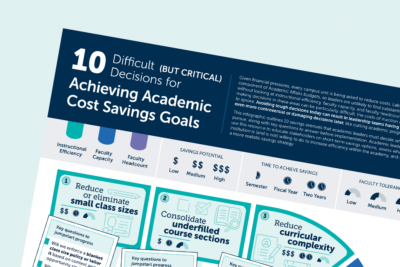Criticism over the value of higher education has intensified in the wake of the recession, reflecting the increasingly common assumption that colleges and universities are not preparing students to succeed in today’s economy. While the intrinsic value of a four-year degree cannot be measured by short-term salary alone, this metric is important to prospective students and their parents who worry about job placement and financial stability after graduation. These concerns lead some students and their parents to choose majors based on job outcomes rather than on personal interest or “fit.”
These shifts in major choice have significantly impacted the enrollment balances at many institutions–particularly between the arts and sciences and STEM programs. For programs reliant on out-of-state and international students these shifts have been particularly extreme as these student segments disproportionately favor career-oriented tracks like engineering and business.
These imbalances have led many, both inside and outside the academy, to call for greater market alignment for traditional liberal arts programs in order to reverse declining enrollments. This has raised concerns among faculty that the essential core of their liberal arts programs will be left behind, as higher education shifts away from intellectual development towards career training.
Fortunately, some institutions have found ways to innovate within traditional liberal arts disciplines to provide greater career development opportunities to meet student, parent, and law maker demand while safeguarding their liberal arts core.
Specializing without sacrificing breadth
After seeing declines in their traditional English program, Susquehanna University began to look for opportunities to provide professional development for their students by launching several professionally-oriented minors based on alumni career outcomes. Their Publishing and Editing minor was so popular with students that they ultimately repackaged it into a full major.
Case study: Susquehanna University
English major becomes publishing and editing major
- Prepares for careers in:
- Editing
- Marketing
- Journalism
- PR
- Media Management
- Highlights of the new major
- Professional in residence teaches industry courses
- Students required to complete an internship
- Core remains the same as English
- Program specific capstone
The Publishing and Editing major uses the same core curriculum as the English Literature program, therefore requiring far less work than developing an entirely new program.
Four elements altered or added to transform the minor into a major
- The English Department developed a practicum taught by a professional-in-residence. This allowed faculty to maintain ownership over the program, while providing students with an industry-specific perspective.
- Susquehanna required all of their students to complete a relevant internship.
- Faculty developed a program-specific capstone.
- Finally, a few new major-specific courses were added to the curriculum.
The new major has been extremely successful, helping to increase English enrollments by 80% in just two years. By aligning the program with alumni career outcomes Susquehanna has been able to ensure that their students gain more specialized skill sets and knowledge within the English program without sacrificing the critical breadth the major supplies.
-
80%
Increase in English enrollments after two years
More Resources

Interdisciplinary Program Starter Kit

10 difficult (but critical) decisions for achieving academic cost
savings goals
